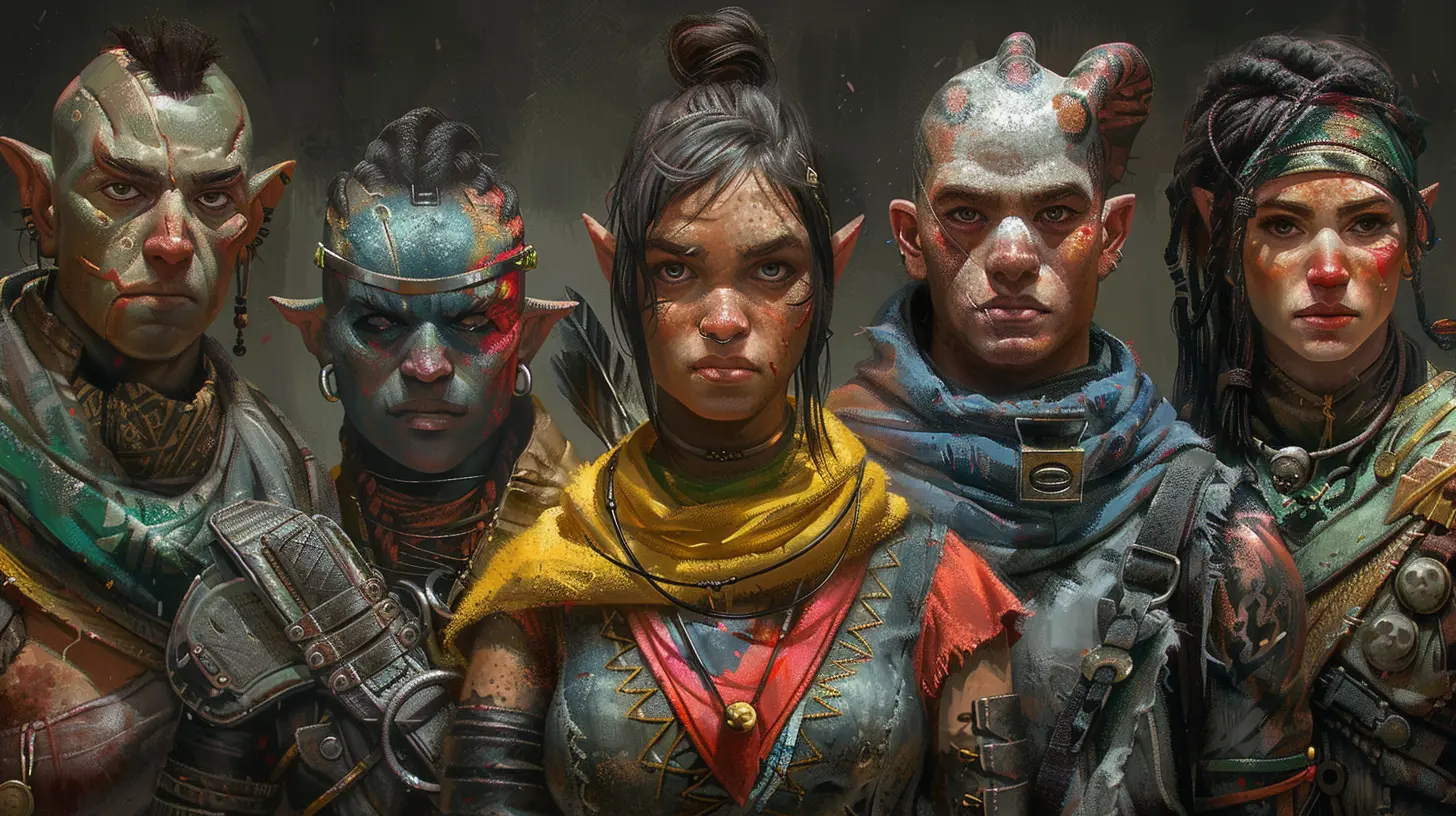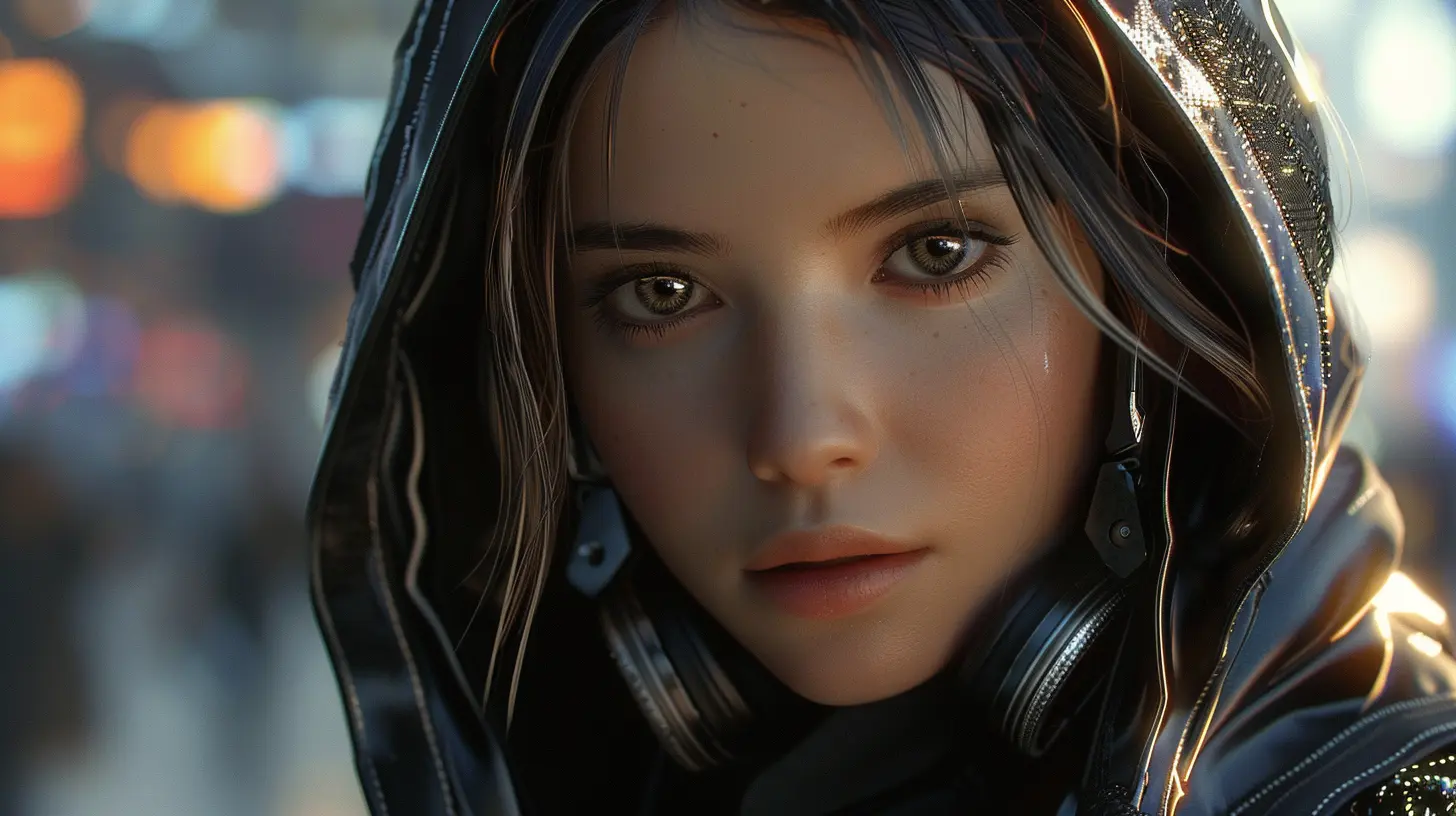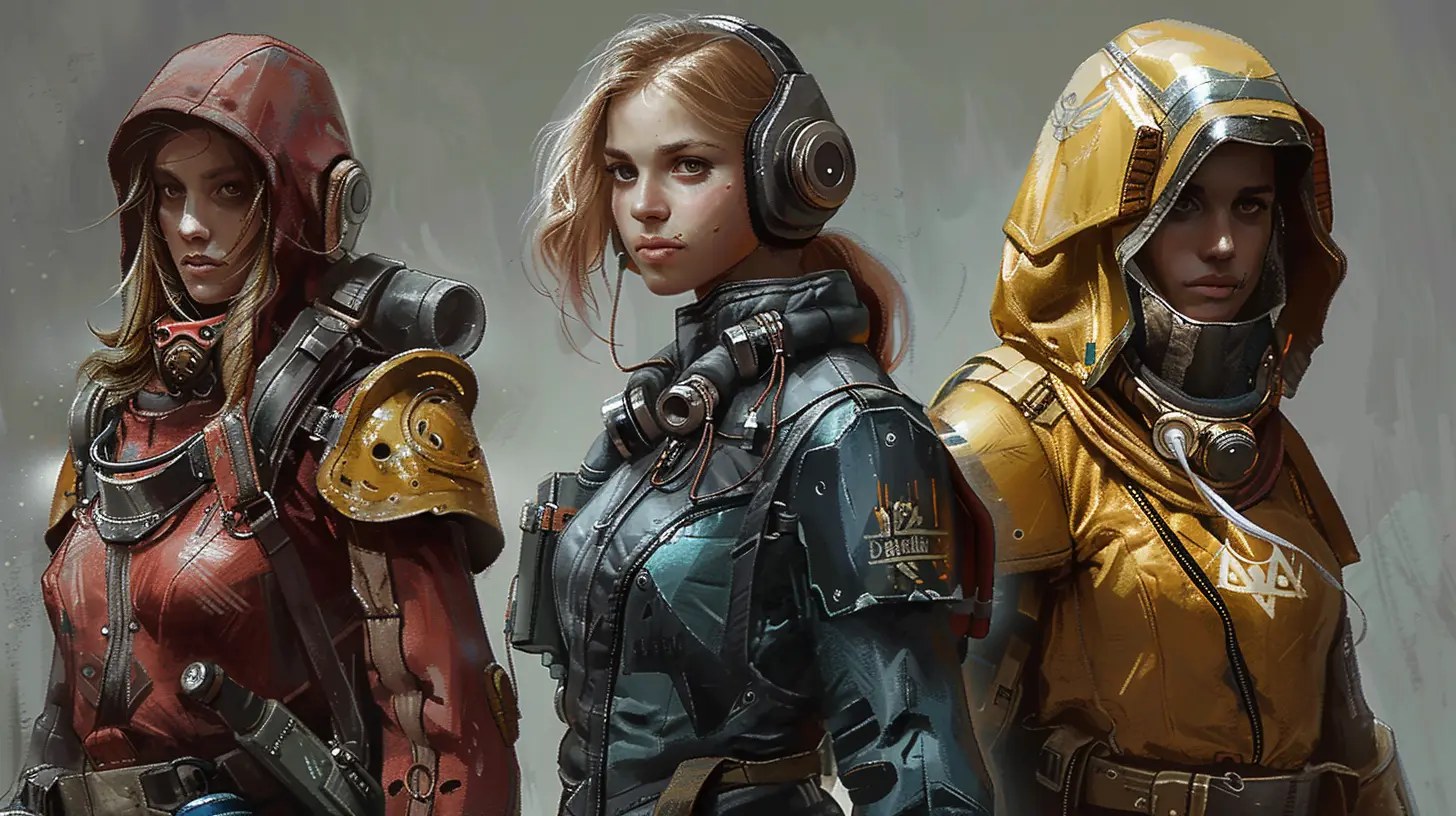Creating Realistic Characters in Sci-Fi and Fantasy Worlds
12 July 2025
Crafting characters in science fiction and fantasy isn't just about slapping a set of weird abilities onto a humanoid shape and calling it a day. If you want your story—or your game—to hit hard, your characters need to feel real. That means building depth, emotion, flaws, and motivations that make them as complex (and messy) as the rest of us.
So, how the heck do you create realistic characters in worlds full of dragon gods, warp drives, and telepathic space lizards? Buckle up. We’re diving into the gritty, emotional, sometimes uncomfortable world of character creation for sci-fi and fantasy—where imagination meets unapologetic realism.
Why Real Characters Matter More Than Fancy Worlds
Let’s be real: Cool worldbuilding is great. Floating cities? Love it. Plasma swords? Sign me up. But if your characters are cardboard cutouts wrapped in glowing armor, no one’s going to care.Characters are the lens through which players and readers experience your world. They bring humanity to the inhuman, grounding your intergalactic empires or cursed kingdoms in something tangible—emotion.
Ever bawled your eyes out over a robot dying in a video game? Yeah. That’s the power of a real character.
Don’t Start With Powers—Start With Pain
Here’s a cold truth: Abilities aren’t personality. If your character’s entire identity is “she can control fire,” then all you’ve got is a walking special effect.Instead, dig into the emotional engine that drives them. What are they afraid of? What mistake do they regret? What do they want more than anything else in the universe?
Maybe your fire-wielding heroine is terrified of her power because she once burned a village to the ground. Now that’s interesting.
Build from that place of vulnerability. Make your characters bleed, metaphorically (or literally, if that’s your thing).
Give Them Flaws—Real, Messy, Annoying Flaws
Perfect characters are boring. Flaws are what hook us emotionally. They’re the stuff that makes us nod and go, “Yep, I’ve been there.”Even if your character is a seven-foot-tall alien with psychic wings, they should still argue with their partner, make bad decisions, or hold onto a grudge for way too long. Maybe they have a god complex. Or imposter syndrome. Or a crippling addiction to borrowed time and bad love.
Don’t be afraid to make them irritating, even unlikeable sometimes. That’s realistic. That’s human.
Let the World Shape Them
In fantasy and sci-fi, the world isn’t just a backdrop—it’s a forge. It should shape who your character is.Think about how the culture, society, government, or environment would affect them. Are they growing up in a post-apocalyptic wasteland where trust gets you killed? Or maybe they’ve been raised in a society where magic is illegal and their secret ability could get them executed.
Your character should carry the scars of their world. Their opinions, biases, speech, and goals should reflect the society they’ve emerged from—even if they’re actively pushing against it.
Layer in Contradictions
Here’s a pro tip: Real people are contradictions. We say one thing and do another. We want love but push people away. We fight for peace with violence.Give your characters that same delicious complexity. Maybe your war-hardened general is haunted by every battle they’ve won. Or your ruthless rebel secretly longs for a quiet life.
Contradictions make characters unpredictable—and unpredictability keeps your audience hooked.
Dialogue: Make It Snap, Crackle, and Pop
Dialogue is where your characters show who they really are. So don’t let it be dull, formal, or exposition-heavy.The way they talk should reflect their personality, background, and emotional state.
- A streetwise smuggler should talk in slang and sarcasm.
- An AI assassin might speak with eerie calm and precision.
- A half-drunk dwarf mage? Slurred words, maybe a wild metaphor or two.
Also, leave room for what’s not said. Silence, hesitation, or deflection can say more than a page of monologue.
Relationships Make or Break Your Characters
People don't exist in vacuums, and neither do characters. Their relationships define them.Whether it’s a sibling rivalry, a forbidden romance, or a mentorship that turns into betrayal—these connections breathe life into your characters and raise the emotional stakes.
Ask yourself:
- Who do they love, hate, protect, or fear?
- What relationships shape their worldview?
- How do their connections evolve over time?
If your characters interact like real people—with tension, affection, jealousy, admiration—that’s realism at work.
Give Them Goals—And Let Them Fail
Motivations are your character’s engine. Without a goal, they’re just drifting.Maybe your character wants revenge. Or to bring magic back to their dying world. Or to prove a prophecy wrong.
The key? Let them chase that goal, screw up, regroup, and grow. Failure is where the transformation happens.
Also, not every goal has to be noble. Selfish goals, misguided dreams, or flat-out destructive paths can be just as gripping—if not more.
Physical Descriptions: Go Beyond the Obvious
Yes, you should describe what your character looks like, but do it with intent, not a fantasy shopping list.Instead of: “He had long silver hair and glowing eyes.”
Try: “His silver hair was always tangled—he had better things to do than comb it—and his eyes glowed faintly, too tired to hide the magic anymore.”
See the difference? One is a visual checklist. The other is storytelling.
Use physical details to reveal personality, history, or mood. Scars, posture, clothing choices—they all tell a story. Make every bit count.
Make Backstories Feel Lived-In, Not Info Dumped
Backstories are essential, but for the love of dragons—don’t dump it all in one go.Let pieces come out naturally, through dialogue or action. Maybe their reaction to an event hints at past trauma. Or a fleeting mention of “the last time I trusted someone” drops a breadcrumb.
Think of it like walking past rooms in a haunted house—you don’t throw open every door at once. You reveal, bit by bit.
Avoid Tropes—Or Break Them With Style
We’ve all seen the Chosen One, the Brooding Anti-Hero, the Wise Mentor.Tropes aren’t inherently bad—they’re familiar because they work. But if you use one, twist it.
- What if your Chosen One wants nothing to do with the prophecy?
- What if your anti-hero is actually cheerful and optimistic?
- What if your mentor is completely unqualified?
Subverting expectations is a killer way to keep your characters fresh and unpredictable.
Mythical Creatures and Aliens Need Personality Too
Creating fantasy or sci-fi species? Great. Now make them people.Too often, writers make aliens cold and logical, or mythical creatures simply evil or wise. That’s lazy.
Give your dragon a gambling addiction. Let your alien diplomat miss their family. Make your elven assassin talk to plants because they’re lonely.
Non-human characters should have just as much depth, emotion, and contradiction as humans. Maybe more.
Voice Acting and Body Language—Don’t Forget the “Show”
If you’re designing characters for a game, voice acting and animations sell the personality more than bios ever will.Even in writing, describe how they carry themselves. Do they fidget? Glare? Never meet anyone’s eyes? These details shout louder than dialogue.
It’s not what they say—it’s how they say it. That’s realism.
Who Are They At The End?
Your characters should change. If they’re the same person by the end of the game or story, you’ve wasted potential.Whether they become braver, colder, wiser, or more broken, give them a journey. Let them earn their scars and their growth.
Transformation is the soul of any great character arc.
Quickfire Checklist: Realistic Character Creation for Sci-Fi/Fantasy
- ✅ Does your character have deep emotional motivations?- ✅ Are they shaped by their world and culture?
- ✅ Do they have flaws and contradictions?
- ✅ Is their dialogue distinctive and authentic?
- ✅ Do they have meaningful relationships?
- ✅ Are they chasing a goal that can evolve or fail?
- ✅ Is their appearance and body language telling a story?
- ✅ Do they grow or change over time?
Nail these, and you’ve got a character who won’t just live in your story—they’ll live rent-free in your readers’ minds.
Final Words: Let Them Breathe
Look, creating realistic characters in sci-fi and fantasy isn’t easy. You’re already worldbuilding, plotting, inventing languages, and managing a heck ton of lore.But the character? That’s what people are going to remember. That’s where the heart lies.
Make them feel pain. Make them make bad choices. Let them laugh in the face of despair, or crumble under the weight of their past.
Because no matter how far your worlds reach—across galaxies or into the depths of ancient magic—it’s character that keeps us grounded.
And when they’re done right?
They’re unforgettable.
all images in this post were generated using AI tools
Category:
Video Game CharactersAuthor:

Brianna Reyes
Discussion
rate this article
1 comments
Sandra Carr
Great insights! Crafting realistic characters in fantastical settings truly enhances storytelling. Balancing the extraordinary with relatable human emotions makes for compelling narratives. Can't wait to see how these techniques evolve in future games! Keep up the amazing work!
July 28, 2025 at 3:24 AM

Brianna Reyes
Thank you! I'm glad you enjoyed the insights. Balancing the extraordinary with human emotions is key, and I’m excited to explore these techniques further in future projects!


